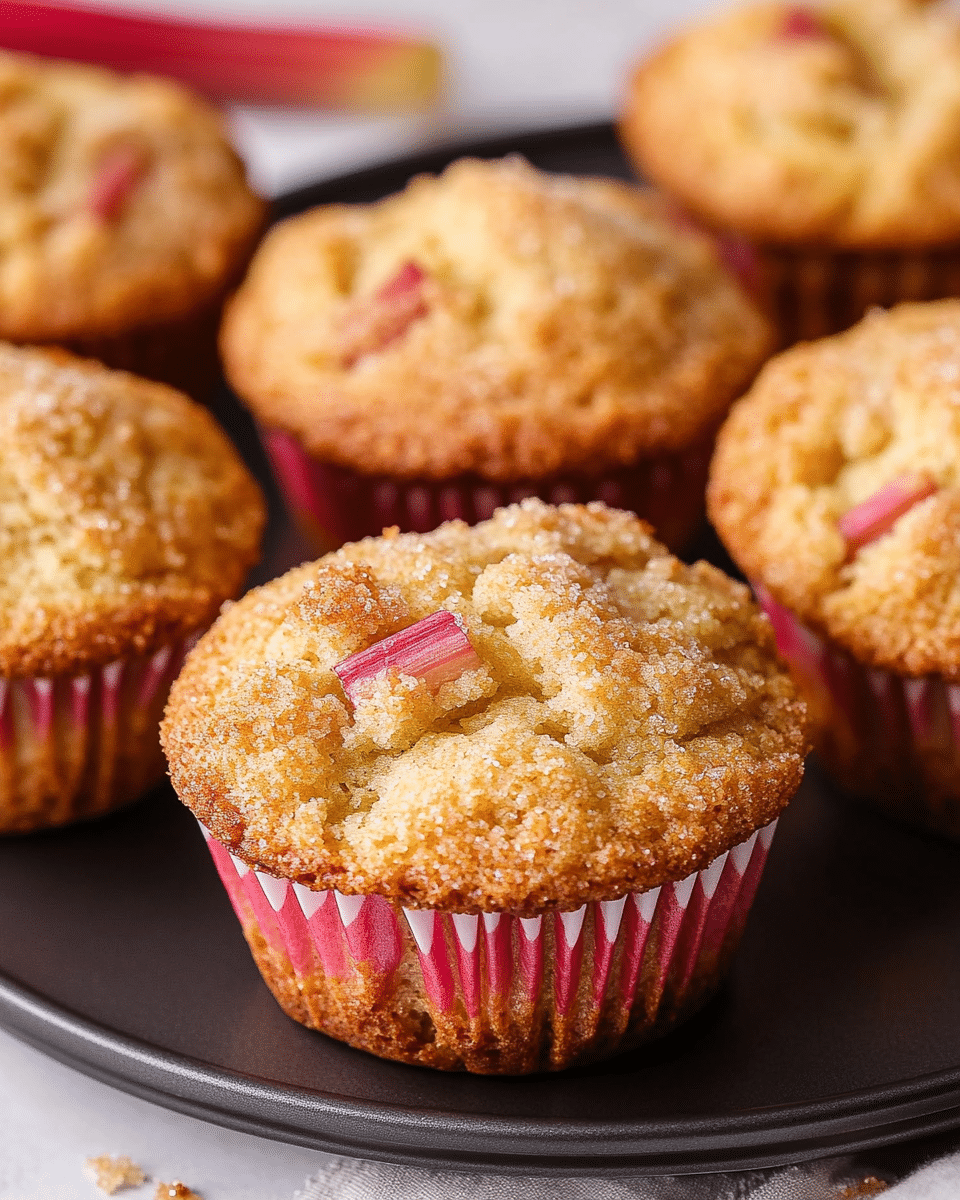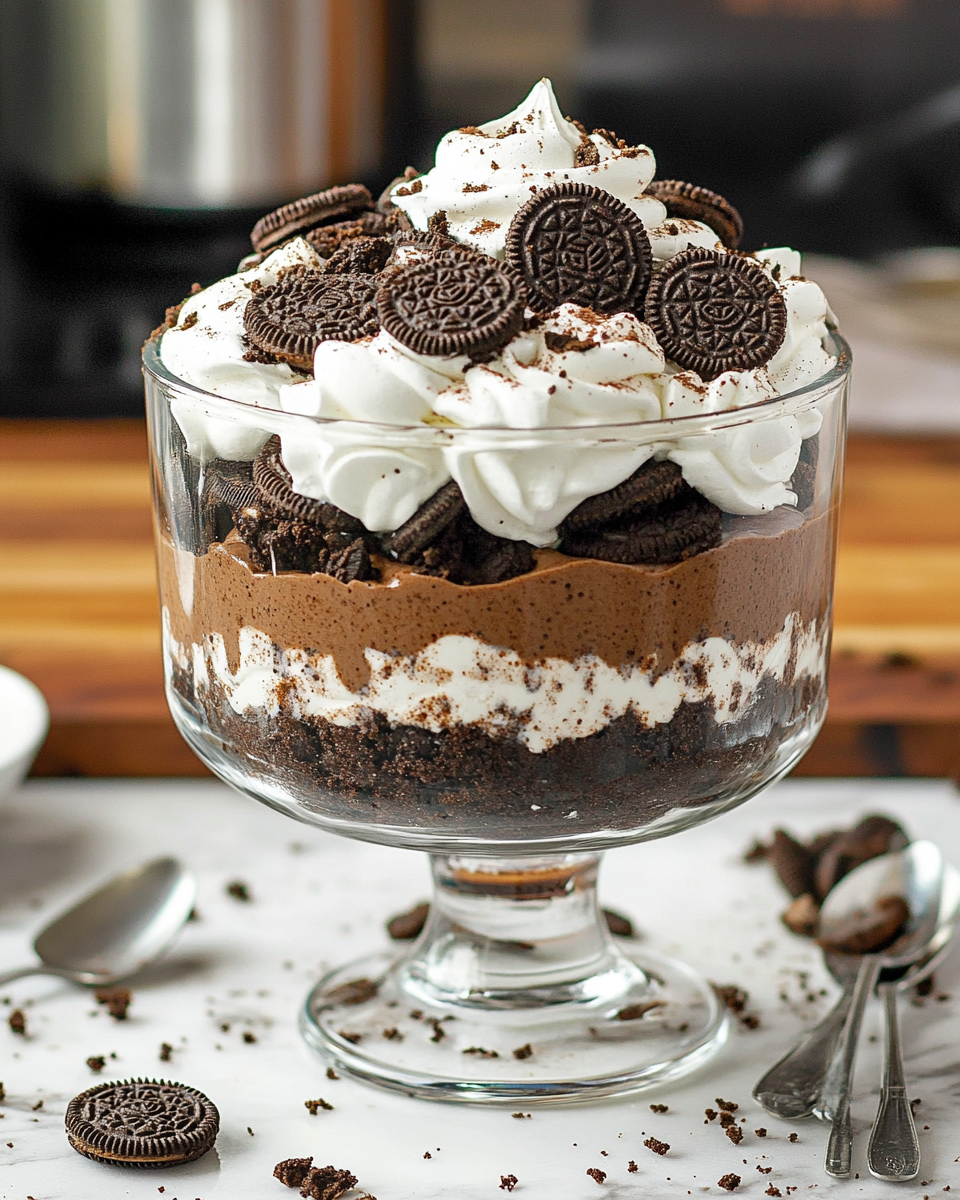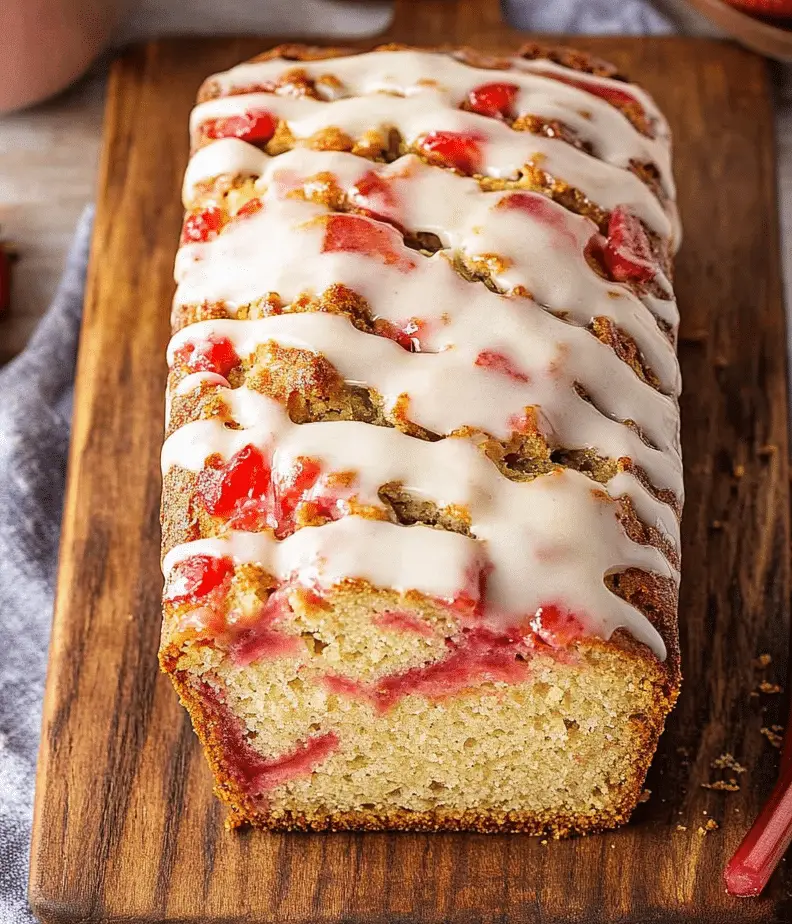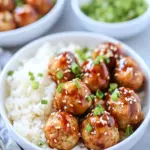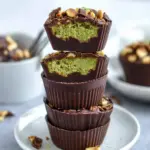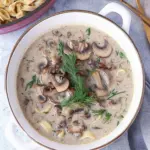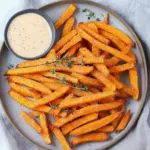A delightful twist on classic muffins, these cinnamon-topped rhubarb muffins are bursting with tart rhubarb pieces and a sweet cinnamon crunch on top. Perfect for breakfast or an afternoon snack, they bring cozy homemade comfort in every bite.
FULL RECIPE
Ingredients
- 2 cups all-purpose flour
- 1 cup granulated sugar
- 2 tsp baking powder
- ½ tsp baking soda
- ½ tsp salt
- 1 tsp ground cinnamon (plus extra for topping)
- 1 cup chopped fresh rhubarb
- 1 large egg
- 1 cup buttermilk
- ⅓ cup vegetable oil
- 1 tsp vanilla extract
- 2 tbsp turbinado sugar (for topping)
Directions
- Preheat oven to 375°F (190°C). Line a muffin tin with paper liners or grease lightly.
- In a large bowl, whisk together flour, sugar, baking powder, baking soda, salt, and 1 tsp cinnamon.
- Gently fold in the chopped rhubarb pieces.
- In another bowl, beat the egg with buttermilk, oil, and vanilla extract until combined.
- Pour the wet ingredients into the dry and stir just until combined (do not overmix).
- Spoon batter evenly into the muffin cups, filling about ¾ full.
- Sprinkle the tops with turbinado sugar and a pinch of cinnamon for that signature cinnamon crunch.
- Bake for 18-22 minutes or until a toothpick inserted comes out clean.
- Cool in the pan for 5 minutes, then transfer to a wire rack to cool completely.
Nutritional Information
- Calories: 180 kcal
- Total Fat: 7 g
- Saturated Fat: 1 g
- Cholesterol: 25 mg
- Sodium: 180 mg
- Total Carbohydrates: 28 g
- Dietary Fiber: 1.5 g
- Sugars: 14 g
- Protein: 3 g
The History of Rhubarb in Baking
Rhubarb has a fascinating history in culinary traditions, especially in baking. Originally cultivated in Asia, rhubarb was prized for its medicinal properties before becoming a beloved ingredient in desserts and baked goods. In Europe and North America, rhubarb found its niche in pies, crumbles, and muffins, celebrated for its tart flavor that contrasts beautifully with sugar. Using rhubarb in muffins connects modern bakers with centuries of tradition, where its unique tang adds complexity to otherwise sweet recipes.
Nutritional Benefits of Rhubarb
Rhubarb is not only flavorful but also a nutrient-dense vegetable often mistaken for a fruit in cooking. It’s rich in vitamin K, which supports bone health and blood clotting, and contains antioxidants that help combat inflammation. Rhubarb is low in calories but high in dietary fiber, making it excellent for digestion. Incorporating rhubarb into muffins offers a subtle boost of these nutrients, providing a healthier alternative to typical sugar-heavy baked treats.
Why Cinnamon Works Perfectly with Rhubarb
Cinnamon and rhubarb are a classic flavor pairing that enhances the overall taste experience. The warm, slightly spicy notes of cinnamon mellow the sharpness of rhubarb’s tartness. This balance creates a comforting and aromatic profile that is both inviting and familiar. Beyond taste, cinnamon also has health benefits like anti-inflammatory properties and blood sugar regulation, making it a thoughtful addition to the recipe.
The Importance of Texture in Muffins
Texture is key when it comes to muffins, and rhubarb muffins deliver on multiple fronts. The tender crumb of the muffin combined with the slight crunch from the cinnamon sugar topping creates a satisfying contrast. Meanwhile, the chunks of rhubarb provide bursts of juiciness that keep each bite interesting. Achieving this balance requires careful mixing and baking time to ensure the muffins are moist but not soggy.
How to Select and Prepare Rhubarb for Baking
Choosing fresh, firm rhubarb stalks is essential for the best muffins. Look for bright red or pink stalks with no signs of wilting or discoloration. Preparing rhubarb involves washing and chopping it into small pieces to distribute throughout the batter evenly. Since rhubarb is quite tart, some recipes call for lightly cooking or macerating it with sugar before adding it to the mix, but this recipe uses it fresh for a clean, bright flavor.
The Role of Buttermilk in Muffins
Buttermilk is a classic ingredient in muffins because it adds moisture and tanginess, helping to tenderize the crumb. The acidity in buttermilk reacts with baking soda and baking powder to create a light, fluffy texture by producing carbon dioxide bubbles during baking. This makes muffins rise nicely and results in a soft, delicate mouthfeel, which pairs beautifully with the rhubarb’s texture.
Tips for Achieving the Perfect Cinnamon Sugar Topping
The cinnamon sugar topping is a standout feature that adds crunch and extra flavor. Using turbinado sugar instead of regular granulated sugar gives the topping a coarse texture that caramelizes beautifully in the oven. To get the best effect, sprinkle the topping evenly right before baking. This not only adds visual appeal but also gives each muffin a delicious, slightly crispy crust that contrasts with the soft interior.
Seasonal Appeal of Rhubarb Muffins
Rhubarb is a seasonal vegetable, typically harvested in spring and early summer, which makes these muffins a perfect seasonal treat. Baking with seasonal ingredients ensures freshness and peak flavor. Plus, the vibrant pink color of rhubarb adds a natural and appealing look to baked goods. These muffins can evoke memories of early summer days and fresh garden harvests, making them especially popular during those months.
Variations and Adaptations for Dietary Preferences
This rhubarb muffin recipe is versatile and can be adapted to suit different dietary needs. For example, you can substitute all-purpose flour with whole wheat or gluten-free flour blends to make them more wholesome or allergy-friendly. The oil can be replaced with applesauce or yogurt for a lower-fat version, and the sugar can be reduced or swapped for natural sweeteners. These adjustments allow bakers to enjoy the flavor while catering to their dietary lifestyle.
Serving Suggestions and Pairings
Rhubarb muffins are delicious on their own but can be elevated with simple accompaniments. Serving them warm with a pat of butter or a drizzle of honey adds richness. They also pair well with cream cheese spreads or yogurt for breakfast. For an afternoon snack, a cup of tea or coffee complements the cinnamon and rhubarb flavors perfectly, enhancing the overall experience and making the muffins a versatile option for any time of day.
Storing and Freezing Rhubarb Muffins
Proper storage is essential to keep muffins fresh and moist. These muffins should be stored in an airtight container at room temperature for up to three days. For longer storage, freezing is a great option. Wrap muffins individually in plastic wrap and place them in a freezer-safe bag. When ready to eat, thaw at room temperature or warm in the oven or microwave. Freezing preserves their flavor and texture, making them a convenient make-ahead treat.
The Cultural Significance of Grandma-Approved Recipes
The label “Grandma Approved” speaks to the comforting, nostalgic quality of this muffin recipe. Recipes passed down through generations carry stories and traditions, often symbolizing love and home. This muffin is more than just a baked good — it’s a connection to family heritage and the timeless joy of sharing food. Using this phrase evokes trust and warmth, inviting people to experience a recipe that has stood the test of time.
Conclusion
Cinnamon-topped rhubarb muffins combine tradition, nutrition, and flavor in a way that makes them a standout baking treat. Their balance of tart rhubarb, warm cinnamon, and tender crumb creates a uniquely comforting experience perfect for any season. Versatile in preparation and adaptable for dietary needs, they carry the spirit of homemade goodness. Whether enjoyed fresh from the oven or stored for later, these muffins offer a delicious reminder of the simple joys in baking, lovingly “grandma approved.”

